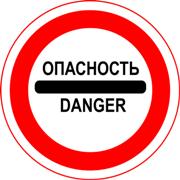Leverage risk.
Lately, brokers have been increasing the maximum leverage more and more; for some companies it has already reached a ratio of 1:2000.
a ratio of 1:2000.
It would seem that this is only to the benefit of the trader, top up your account with $100 and trade with a volume of 200,000 and only manage to take the profit.
But in practice the situation does not work out quite as expected. A trend rarely moves in one direction for more than 15-20 points; even on short time frames there are constant fluctuations in the opposite direction. What do they mean for a trader using large leverage?
The risk of leverage is clearly visible in the example.
Let's not use the maximum size, let's take at least 1:1000. With $100 in your account and a leverage of 1:1000, you can open a trade of about 1 lot, that is, a price movement of just one point will bring you $10 in profit or loss.
Which is equal to 10% of your deposit amount. Trading with such leverage is not only difficult, but unrealistic, but also the size of the spread should be taken into account.
That is, when you open a transaction, you immediately lose from 10 to 30 percent of your deposit, a couple more points and half of your capital has disappeared. And this does not take into account the sharp price jumps that occur during news releases; in this case, you may simply not physically have time to close the deposit, and the stop loss will work with slippage.
If everything is so risky, then why do brokers offer their clients to trade in huge volumes?
It's all about the spread.
Rather than the desire of brokers to quickly drain the client’s deposit, Forex brokerage companies have recently preferred to make money on the spread rather than on draining deposits.
Let’s even take our case, having 100 dollars and opening transactions of 0.1 lots, you bring the brokerage company 1-3 dollars from each transaction, but if the volume increases to one lot, the spread will be from 10 to 30 dollars, depending on the currency pair .
Moreover, the number of transactions will increase significantly, because you will leave the market at the slightest hint of losses. What about scalping?
Scalping has long been called one of the riskiest trading strategies, but even scalpers rarely use a leverage of more than 1:300, which is quite enough for aggressive trading.
Which size is more optimal?
You will find the answer to this question in the article “ How to choose leverage ”.
